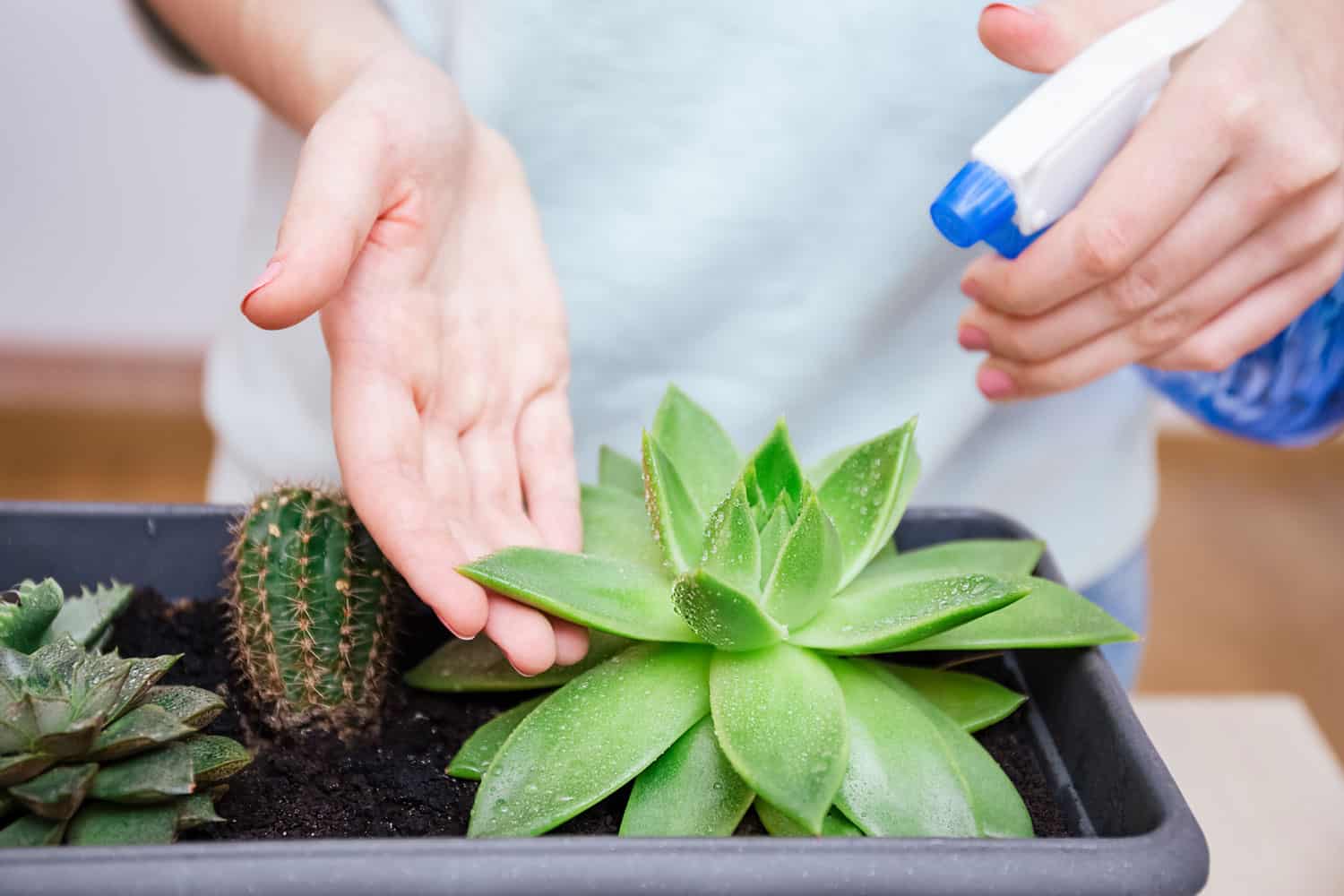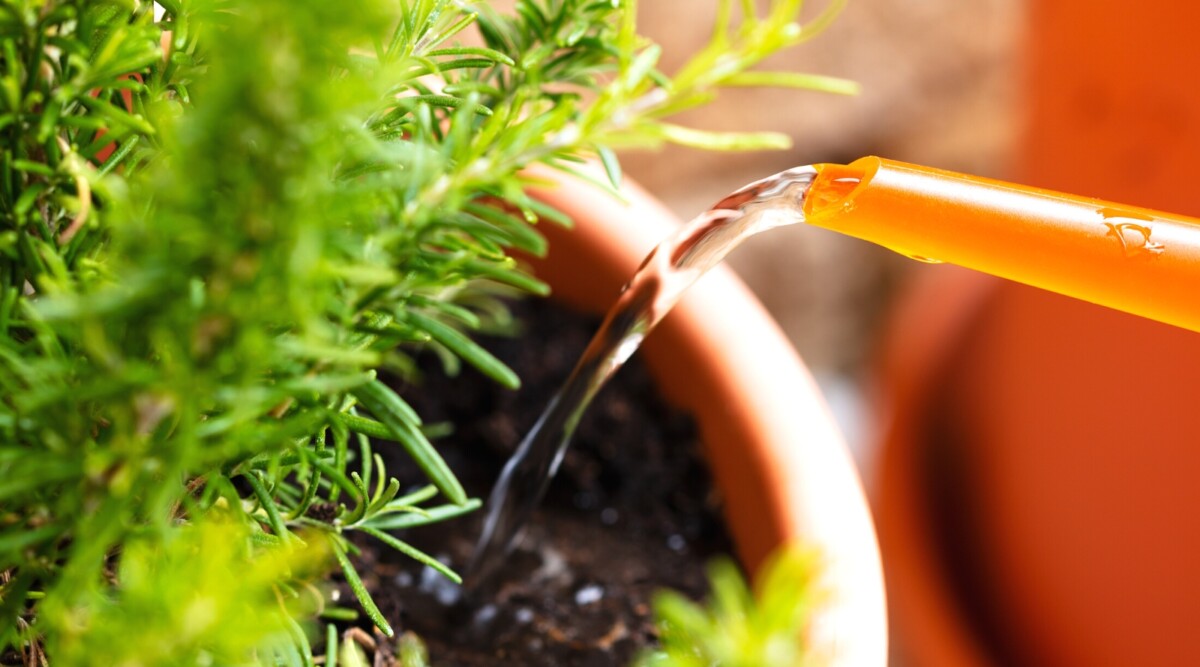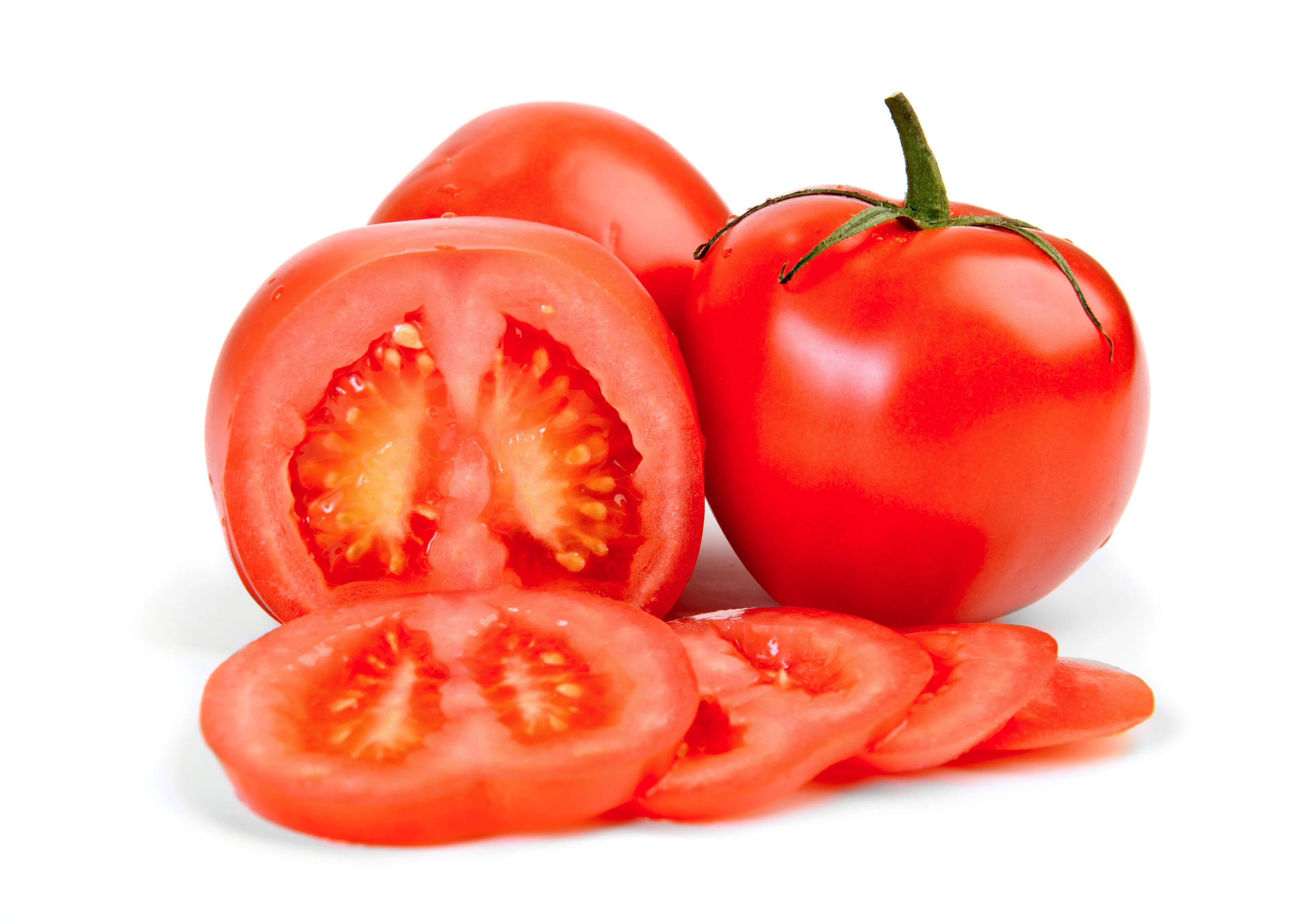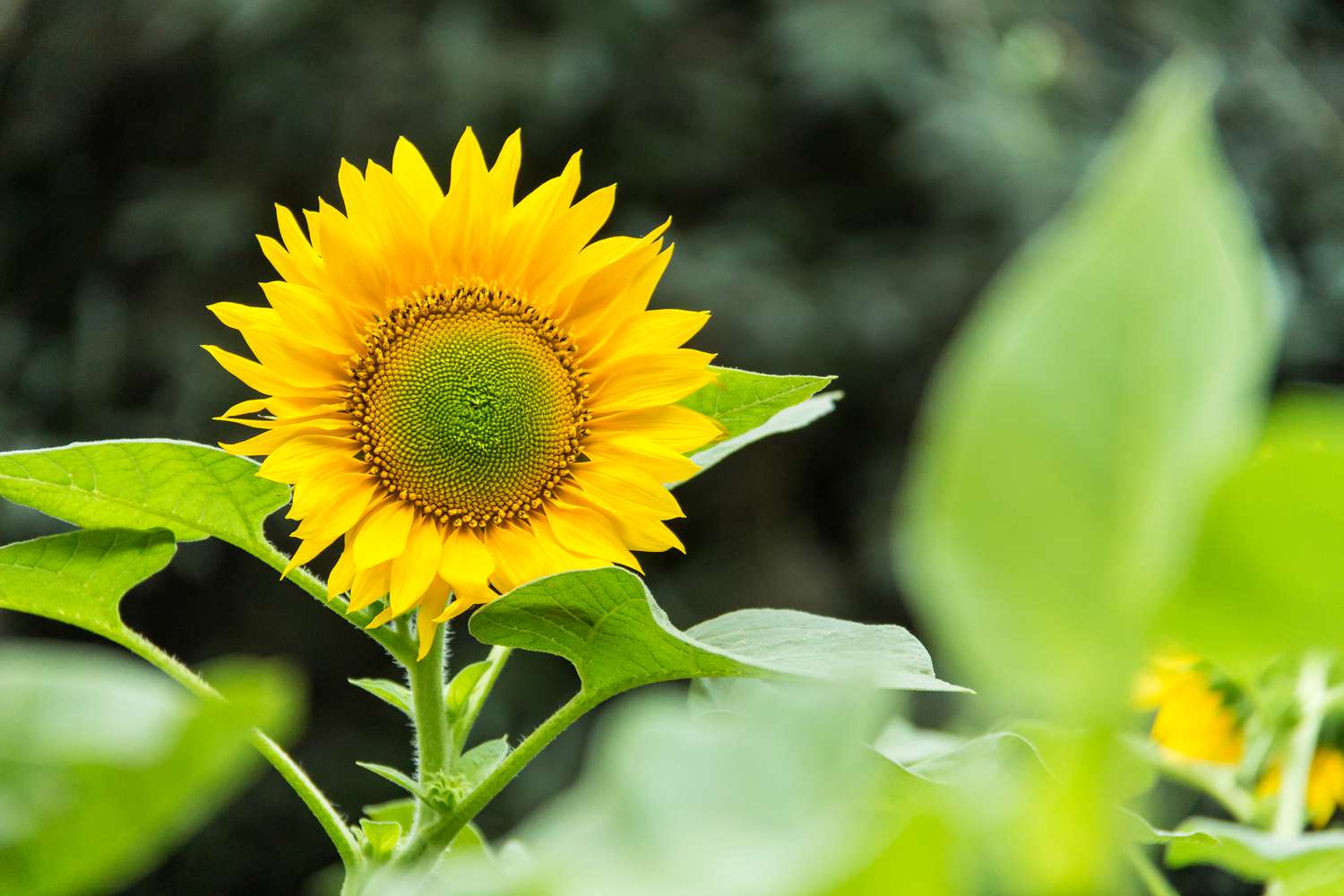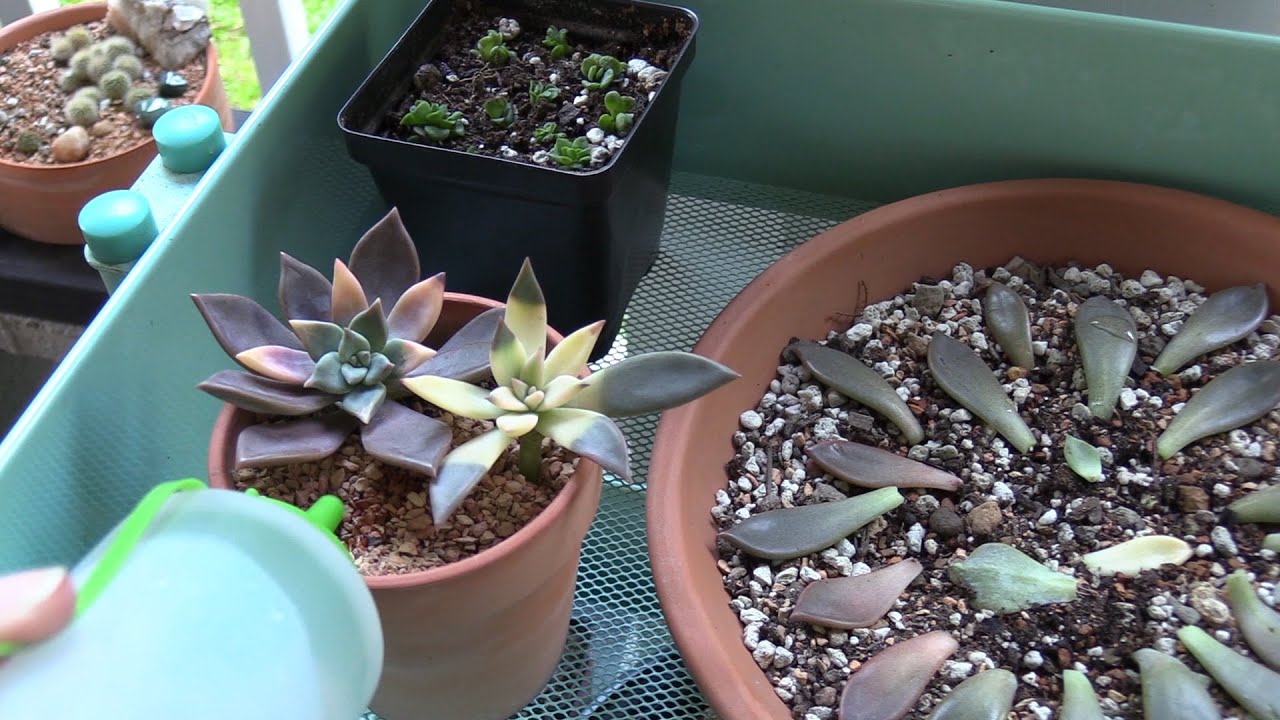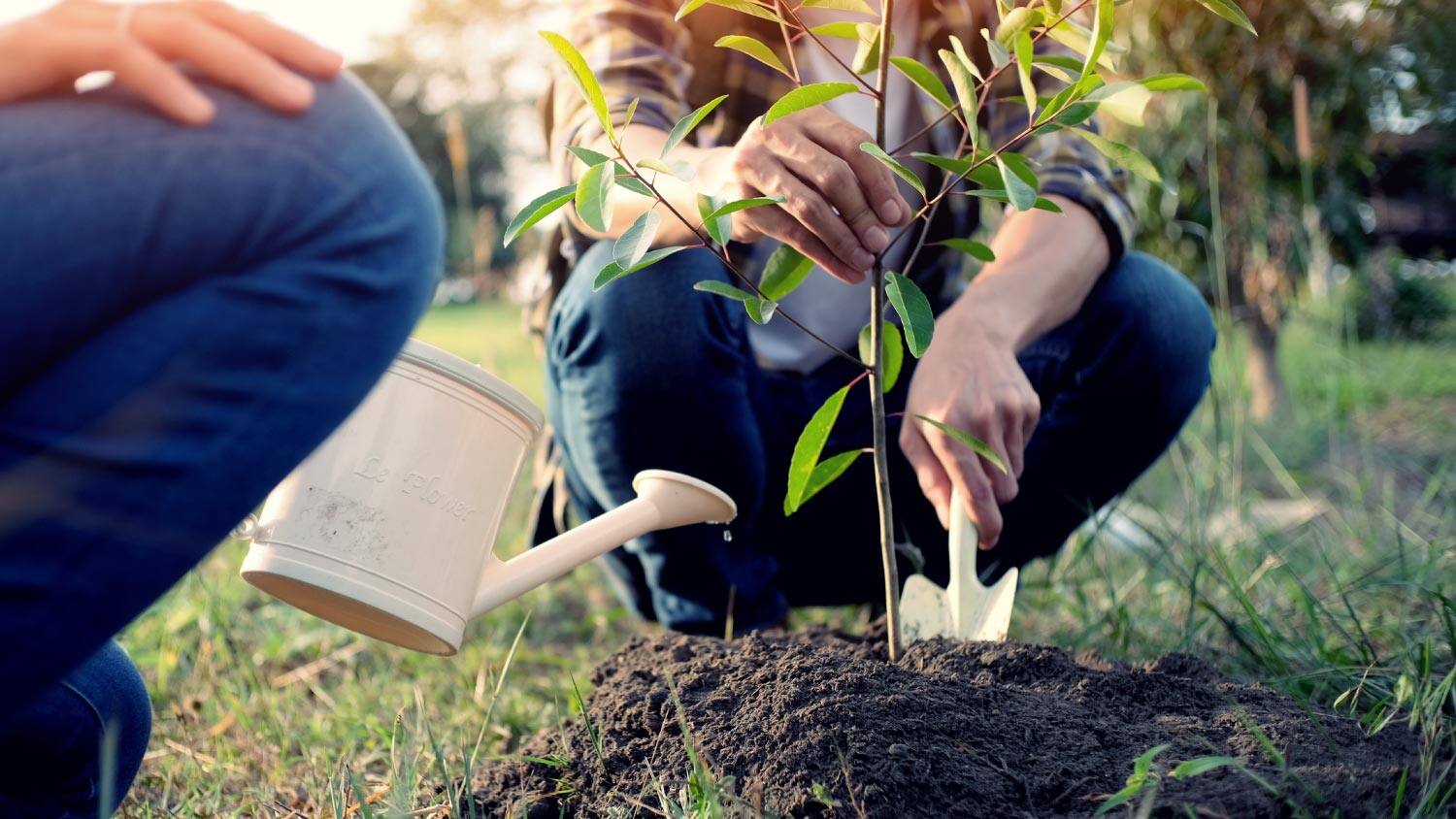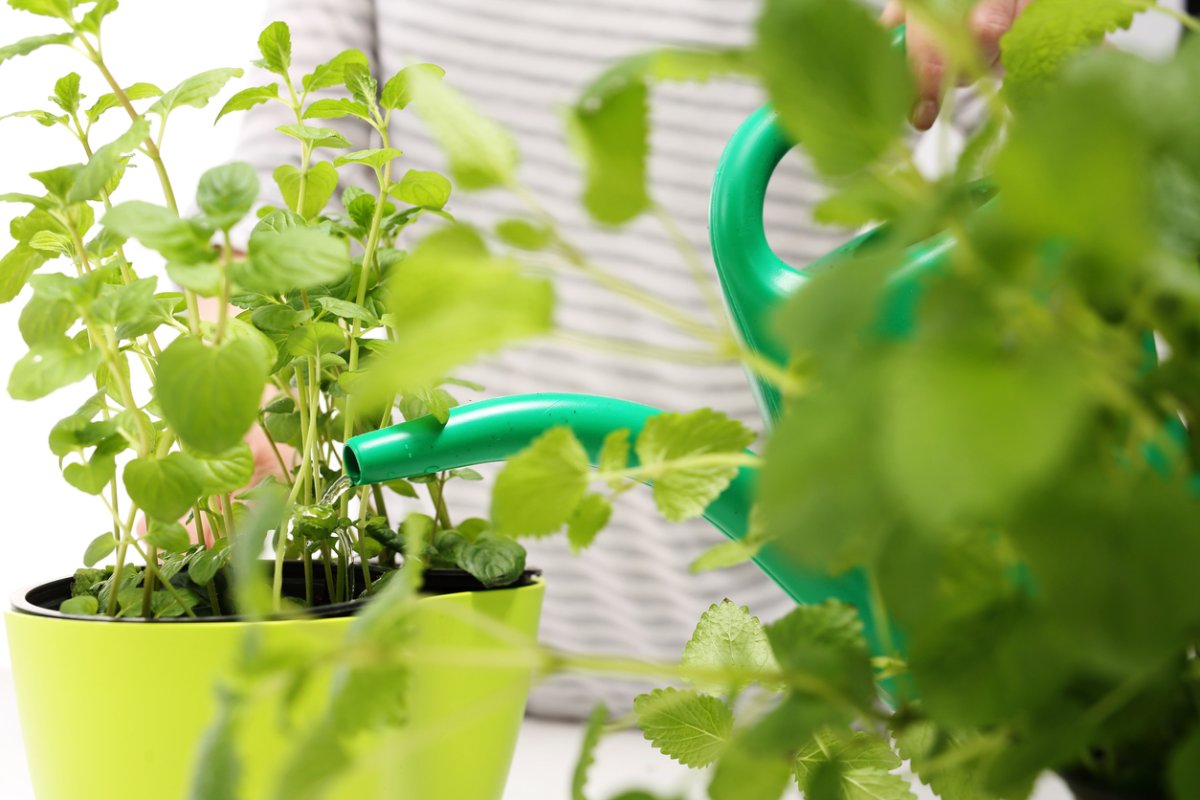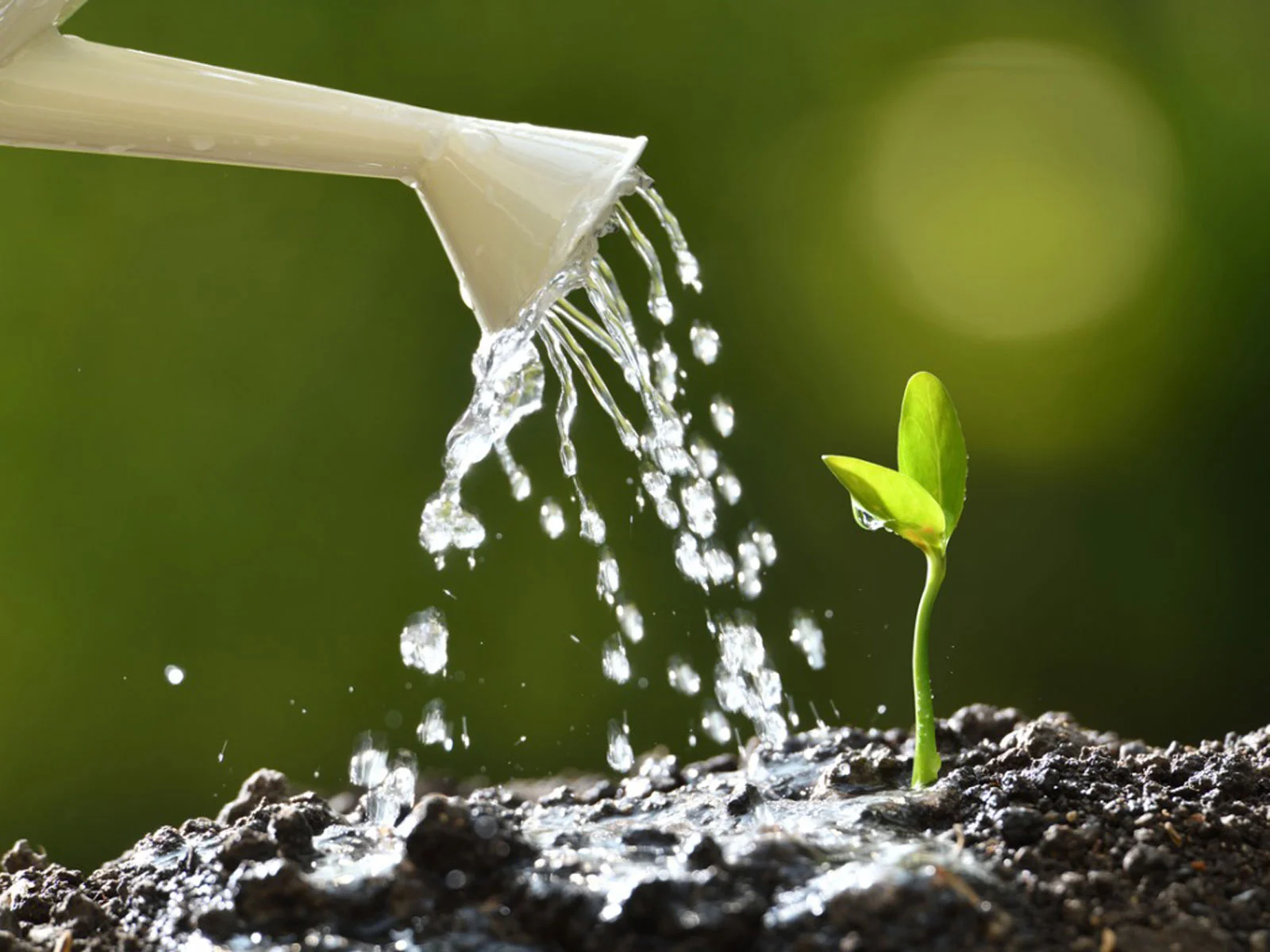Home>Gardening Techniques>Plant Care>How Often Should You Water Tomato Seedlings
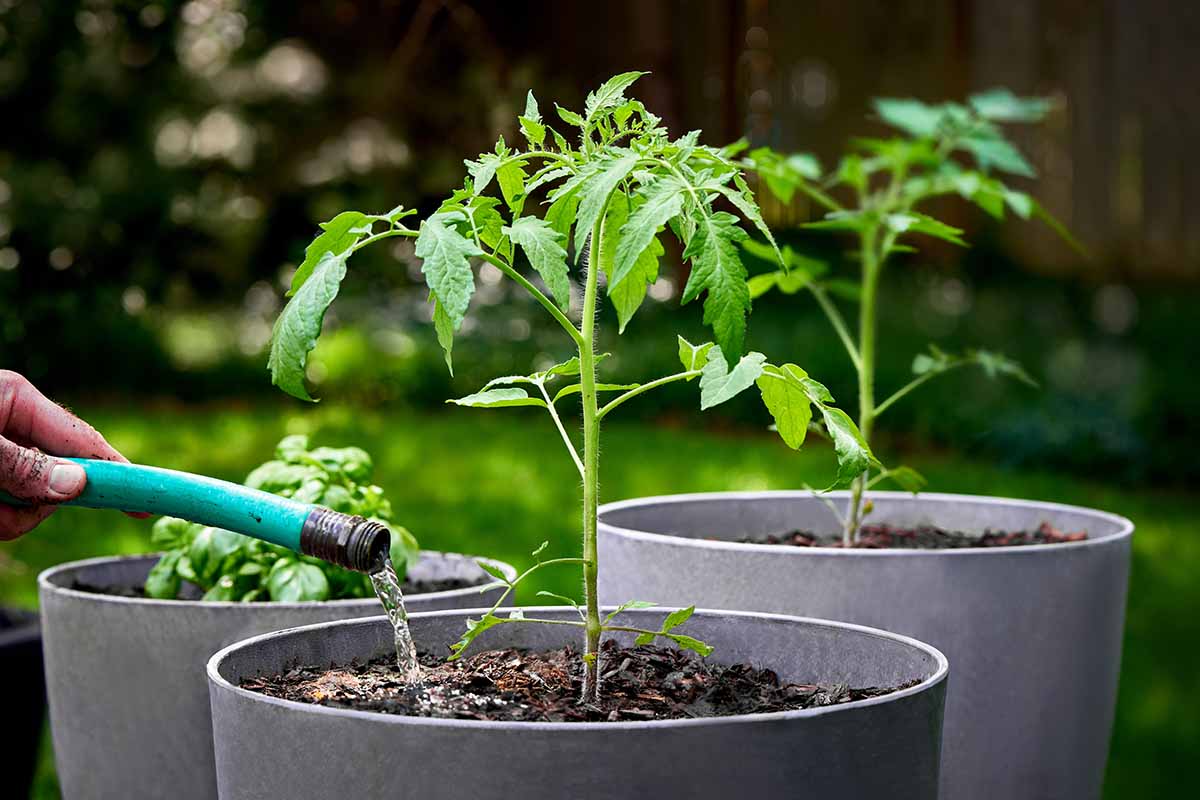

Plant Care
How Often Should You Water Tomato Seedlings
Modified: February 7, 2024
Discover the best plant care practices for watering tomato seedlings. Learn how often to water them for optimal growth and health.
(Many of the links in this article redirect to a specific reviewed product. Your purchase of these products through affiliate links helps to generate commission for Chicagolandgardening.com, at no extra cost. Learn more)
Table of Contents
- Introduction
- Understanding the Watering Needs of Tomato Seedlings
- Factors to Consider in Determining Watering Frequency
- Signs of Overwatering Tomato Seedlings
- Signs of Underwatering Tomato Seedlings
- Finding the Right Balance: How Often to Water Tomato Seedlings
- Watering Techniques for Tomato Seedlings
- Additional Tips for Watering Tomato Seedlings
- Conclusion
Introduction
Welcome to the world of plant care, where nurturing and tending to your botanical companions is not only a hobby but also a rewarding experience. If you’re a gardening enthusiast, you know that each plant has its unique needs, and providing the right care is essential for their growth and development. One such plant that requires careful attention is the tomato seedling.
Tomato seedlings are delicate and require special care, especially when it comes to watering. Watering is a crucial aspect of plant care, as it provides the necessary hydration for plants to thrive. However, it’s important to strike the right balance – too little water can lead to dehydration and stunted growth, while excessive watering can cause root rot and other water-related issues.
In this article, we will delve into the world of tomato seedling care and focus specifically on their watering needs. We will explore the factors that influence watering frequency and provide tips on how to properly water your tomato seedlings. By the end, you will have a clear understanding of how often to water your beloved tomato seedlings and the techniques to ensure their optimal growth and productivity.
Understanding the Watering Needs of Tomato Seedlings
In order to provide proper care for your tomato seedlings, it’s essential to have a basic understanding of their watering needs. Tomato seedlings require consistent moisture to establish a healthy root system and grow into robust, fruit-bearing plants.
One of the key factors to consider when watering tomato seedlings is their stage of growth. Initially, when the seedlings are just emerging from the soil, they require more frequent watering to keep the soil evenly moist. As they grow and develop, their water needs will change.
Another important consideration is the climate and environmental conditions. Tomatoes are warm-season plants and thrive in temperatures between 60°F and 85°F (15°C-29°C). In hotter climates, the soil tends to dry out faster, necessitating more frequent watering. On the other hand, in cooler climates, the soil may hold moisture for longer periods, requiring less frequent watering.
The type of soil you use also plays a significant role in the watering needs of tomato seedlings. Well-draining soil is essential, as it allows excess water to drain away, preventing waterlogged conditions that can lead to root rot. Sandy or loamy soil types are ideal for tomatoes, as they promote good drainage while retaining the right amount of moisture.
It’s important to note that while tomato seedlings need consistent moisture, they also require proper air circulation around their roots. Overwatering can lead to waterlogged soil, which can suffocate the roots and inhibit their growth. It’s crucial to find the right balance and avoid both underwatering and overwatering.
By understanding the unique needs of tomato seedlings and considering factors such as growth stage, climate, and soil type, you can develop a watering routine that provides optimal conditions for your plants’ development. In the following sections, we will explore the signs of overwatering and underwatering tomato seedlings, as well as techniques to find the right balance and water your tomato seedlings effectively.
Factors to Consider in Determining Watering Frequency
When it comes to watering tomato seedlings, several factors come into play in determining the appropriate watering frequency. By considering these factors, you can ensure that your tomato seedlings receive the right amount of moisture to thrive. Let’s explore these factors in more detail:
- Stage of Growth: The stage of growth of your tomato seedlings is a crucial factor in determining watering frequency. During the early stages, when the seedlings are establishing their root system, they will require more frequent watering. As they mature and develop stronger roots, watering can be adjusted accordingly. It’s important to monitor the growth of your tomato seedlings and adjust watering frequency accordingly.
- Climate and Environment: The climate and environmental conditions in your area play a significant role in watering frequency. In hot and dry climates, tomato seedlings may require more frequent watering to prevent them from drying out. High temperatures can cause the soil to dry out faster, so it’s important to monitor soil moisture levels regularly. On the other hand, in cooler and more humid climates, watering frequency may be less frequent as the soil retains moisture for longer periods.
- Soil Type and Drainage: The type of soil you are using and its drainage characteristics also impact watering frequency. Well-draining soil is essential for tomato seedlings as it allows excess water to drain away, preventing waterlogged conditions. Sandy or loamy soil types are ideal for tomatoes as they provide good drainage while retaining adequate moisture. If you are using heavy or clay soil, you may need to adjust your watering routine to prevent water from stagnating around the roots.
- Container Size: If you are growing tomato seedlings in containers, the size of the container will affect watering frequency. Smaller containers tend to dry out more quickly than larger ones, as they have less soil to retain moisture. Therefore, tomato seedlings in smaller containers may require more frequent watering to keep the soil consistently moist. Consider the container size when determining watering frequency for your tomato seedlings.
- Weather Conditions: Keep an eye on weather conditions, especially during periods of intense heat or prolonged rainfall. Hot, dry weather may increase the need for more frequent watering, while heavy rainfall may decrease the need for supplemental watering. Adjust your watering schedule accordingly based on the weather forecast in your area.
By taking into account these factors, you can determine the appropriate watering frequency for your tomato seedlings. Remember that monitoring your plants and observing their response to watering is crucial. Proper watering is essential for the overall health and vigor of your tomato plants, so pay attention to the signs of overwatering and underwatering, which we will explore in the next section.
Signs of Overwatering Tomato Seedlings
While watering is essential for the health of tomato seedlings, overwatering can be detrimental to their growth and overall well-being. It’s important to be able to recognize the signs of overwatering to prevent any potential damage. Here are some common signs that your tomato seedlings might be receiving too much water:
- Wilting and Yellowing Leaves: One of the first signs of overwatering is wilting and yellowing of the leaves. The excess moisture can cause the roots to become waterlogged, depriving them of oxygen. As a result, the leaves may appear droopy and begin to turn yellow.
- Mushy or Foul-Smelling Roots: Overwatering can lead to root rot, which is characterized by mushy or discolored roots. If you notice a foul smell coming from the soil or notice that the roots are soft and slimy, it’s a clear indication of overwatering.
- Fungal Growth: Excess moisture creates a favorable environment for fungal growth. Therefore, if you observe the presence of mold, mildew, or fungus on the soil surface or on the stems and leaves of your tomato seedlings, it’s likely that overwatering is the cause.
- Stunted Growth: Overwatering inhibits the absorption of nutrients by the roots, resulting in stunted growth. If your tomato seedlings are not thriving or seem to be growing at a slower pace than expected, excessive watering could be the culprit.
- Waterlogged Soil: Digging a little into the soil around your tomato seedlings can reveal whether the soil is waterlogged. If the soil feels excessively wet, heavy, and clumpy, it indicates that there is too much moisture present.
If you notice any of these signs in your tomato seedlings, it’s important to take action to rectify the situation. First, reduce the frequency of watering and only water when the top inch of soil feels dry. Additionally, ensure that your pots or containers have proper drainage to allow excess water to escape. Allowing the soil to dry out slightly between watering can help promote better root growth and prevent further damage from overwatering.
Remember, finding the right balance is key to the successful growth of your tomato seedlings. In the next section, we will explore the signs of underwatering and provide tips on how to water your tomato seedlings effectively.
Signs of Underwatering Tomato Seedlings
While overwatering can be detrimental to tomato seedlings, underwatering can also have negative effects on their growth and development. It’s important to be able to recognize the signs of underwatering to ensure that your plants receive adequate hydration. Here are some common indicators that your tomato seedlings may not be receiving enough water:
- Drooping and Limp Leaves: One of the first signs of underwatering is drooping and limp leaves. When tomato seedlings are not receiving enough water, they will begin to wilt, and the leaves may appear floppy and lifeless.
- Dry and Crumbly Soil: Underwatered plants will cause the soil to dry out quickly. If you notice that the soil around your tomato seedlings feels dry, crumbly, and pulls away from the sides of the container, it’s a clear indication of insufficient watering.
- Dull and Pale Leaves: Lack of water can cause the leaves to become dull and pale. You may notice a change in the vibrant green color of the leaves, as they appear less vibrant and lose their luster.
- Slow Growth: Insufficient water can hinder the nutrient uptake process, leading to slow growth in tomato seedlings. If your plants are not growing as quickly as they should, it may be due to lack of water.
- Leaf Curling: In an attempt to conserve water, tomato seedlings may curl their leaves inward. This is a defense mechanism to reduce water loss through the leaf surface.
If you notice any of these signs in your tomato seedlings, it’s crucial to take immediate action to provide them with adequate water. Ensure that the soil is evenly moist by watering thoroughly, allowing the water to penetrate deep into the roots. However, be cautious not to water excessively, as it can lead to overwatering and root rot.
To prevent underwatering in the future, it’s important to establish a watering routine and regularly monitor soil moisture levels. Consider using a moisture meter to help gauge when it’s time to water your tomato seedlings. Additionally, providing proper drainage in the containers or pots can help prevent water stagnation and ensure that the plants receive the right amount of water.
By being attentive to the signs of both overwatering and underwatering, you can strike the perfect balance and provide your tomato seedlings with the optimal amount of hydration. In the next section, we will discuss how to determine the right watering frequency for your tomato seedlings and explore various watering techniques.
Finding the Right Balance: How Often to Water Tomato Seedlings
When it comes to watering tomato seedlings, finding the right balance is crucial. It involves providing enough water to keep the plants hydrated and healthy while avoiding both overwatering and underwatering. So, how often should you water your tomato seedlings? Let’s explore some guidelines to help you determine the ideal watering frequency:
- Monitor Soil Moisture: Regularly check the moisture level of the soil by inserting your finger about an inch into the soil. If it feels dry at this depth, it is time to water your tomato seedlings. However, if the soil feels slightly moist, it’s best to hold off on watering and check again in a day or two.
- Consider the Weather: Take into account the weather conditions when determining watering frequency. Hot and dry weather may necessitate more frequent watering, while cooler and more humid weather will require less frequent watering. Adjust your watering schedule accordingly based on the current climate.
- Water deeply: When you do water, make sure to water deeply. This means allowing the water to penetrate down to the root zone. Shallow watering only wets the surface of the soil and encourages shallow root growth, making the plants more susceptible to drought stress.
- Avoid Watering on a Set Schedule: Instead of watering on a fixed schedule, it’s best to water your tomato seedlings based on their specific needs. The watering frequency can vary depending on factors such as stage of growth, climate, soil type, and container size. Adjust your watering routine accordingly to ensure that your plants receive the right amount of moisture.
- Practice Mulching: Mulching around your tomato seedlings can help retain soil moisture and regulate temperature. Apply a layer of organic mulch, such as straw or shredded leaves, around the base of the plants. This will help reduce water evaporation from the soil surface and minimize the need for frequent watering.
- Observe Plant Responses: Pay attention to how your tomato seedlings respond to watering. Healthy plants will have vibrant foliage, strong growth, and produce an abundance of flowers and fruits. If the plants appear wilted or show signs of overwatering or underwatering, adjust your watering frequency accordingly.
Remember, finding the right balance with watering tomato seedlings is a combination of monitoring, observation, and adjusting based on the specific needs of your plants. It’s always better to slightly underwater than to overwater, as tomato plants generally recover more easily from slight dehydration compared to root rot caused by excessive watering.
By following these guidelines and paying close attention to the needs of your tomato seedlings, you can establish an effective watering routine that promotes healthy growth and ensures a bountiful harvest. In the next section, we will explore different watering techniques that can further enhance the well-being of your tomato seedlings.
Watering Techniques for Tomato Seedlings
Proper watering techniques are essential for the health and vitality of your tomato seedlings. By employing the right watering techniques, you can ensure that your plants receive the necessary moisture to thrive. Let’s explore some effective watering techniques for tomato seedlings:
- Water at the Base: When watering your tomato seedlings, it’s important to direct the water at the base of the plants, near the soil surface. Avoid watering the leaves as excessive moisture on the foliage can increase the risk of fungal diseases.
- Use a Soaker Hose or Drip Irrigation: Consider using a soaker hose or drip irrigation system for watering your tomato seedlings. These irrigation methods deliver water directly to the soil, minimizing water waste and ensuring that the roots receive an adequate water supply. They also help prevent water splashing onto the leaves, reducing the risk of diseases.
- Water in the Morning: It’s best to water your tomato seedlings in the morning. Watering early in the day allows the leaves to dry out before evening, reducing the likelihood of disease development. It also ensures that the plants have access to water throughout the day, promoting healthy growth.
- Consistent, Deep Watering: When you do water, make sure to water deeply and thoroughly. This encourages the roots to grow deeper into the soil, promoting stronger and more drought-resistant plants. Avoid light, frequent watering that only moistens the surface soil as it encourages shallow root development.
- Adjust Watering in Extreme Weather: During periods of intense heat or prolonged rainfall, it’s important to adjust your watering routine accordingly. In hot weather, you may need to water more frequently to combat evaporation and prevent dehydration. Conversely, during rainy periods, you may need to adjust your watering to avoid over-saturation.
- Observe Runoff: Keep an eye out for runoff when watering your tomato seedlings. If you notice that the water is running off the surface of the soil rather than being absorbed, it’s an indication that the soil is dry and has become compacted. Consider adding organic matter, such as compost, to improve the soil’s ability to retain moisture.
By implementing these watering techniques, you can ensure that your tomato seedlings receive water efficiently and effectively. Remember to monitor the moisture levels of the soil regularly and make adjustments as needed. Strive to maintain consistent, adequate moisture without the risk of overwatering or underwatering. With proper watering techniques, your tomato seedlings will establish strong roots and grow into healthy, productive plants.
In the next section, we will provide some additional tips to further optimize your watering routine and care for your tomato seedlings.
Additional Tips for Watering Tomato Seedlings
As you continue to care for your tomato seedlings and fine-tune your watering routine, here are some additional tips to help you maximize their growth and ensure they receive the right amount of water:
- Use Rainwater or Collected Water: Whenever possible, consider using rainwater or collected water for watering your tomato seedlings. Rainwater is naturally free of chemicals and provides beneficial nutrients for your plants. If you collect water from other sources, such as dechlorinated tap water, let it sit overnight to allow any chlorine to dissipate.
- Water the Root Zone: Focus your watering efforts on the root zone of the tomato seedlings. This is where the roots are actively absorbing water and nutrients. By directing the water to this area, you ensure that your plants receive the maximum benefit from each watering session.
- Avoid Watering Late in the Day: Watering late in the day, especially in the evening, can lead to prolonged leaf moisture, creating a favorable environment for diseases to thrive. It’s best to water early in the morning to give the leaves ample time to dry before nighttime.
- Keep an Eye on Soil Moisture with Mulch: Applying a layer of organic mulch around your tomato seedlings can help regulate soil moisture levels. Mulch acts as a barrier, minimizing evaporation and reducing weed growth. It also helps to keep the soil consistently moist, reducing the frequency of watering.
- Test Soil Moisture with a Moisture Meter: Consider using a moisture meter to accurately measure the moisture levels of the soil. This handy tool can help take the guesswork out of watering and ensure that you provide the right amount of water to your tomato seedlings.
- Water Newly Transplanted Seedlings with Care: When transplanting seedlings into the garden, ensure that you give them a thorough watering immediately after transplanting. This provides a good moisture buffer for the new plants and helps them settle in their new environment.
These additional tips can further enhance your watering routine and contribute to the overall health and success of your tomato seedlings. Remember that consistency is key – monitor soil moisture, observe your plants’ responses, and adjust your watering practices accordingly. Providing the right amount of water at the right time will promote strong, vigorous growth and increase the likelihood of a bountiful tomato harvest.
In the next section, we will conclude this article by summarizing the key points discussed and emphasizing the importance of finding the right balance in watering your tomato seedlings.
Conclusion
In conclusion, proper watering is essential for the successful growth and development of your tomato seedlings. Finding the right balance between underwatering and overwatering is crucial to ensure healthy, thriving plants. By understanding the watering needs of tomato seedlings and considering factors such as growth stage, climate, soil type, and container size, you can determine the ideal watering frequency.
Signs of overwatering, such as wilting leaves, root rot, and fungal growth, indicate an excessive amount of water, while signs of underwatering, like drooping leaves and dry soil, signify insufficient hydration. By adjusting your watering routine based on these signs and observing the response of your tomato seedlings, you can provide them with the optimal amount of water they need to flourish.
Implementing proper watering techniques, such as watering at the base, using soaker hoses or drip irrigation, and watering deeply and consistently, can maximize water efficiency and minimize the risk of disease. Additionally, considering factors such as weather conditions and using mulch can further enhance the effectiveness of your watering routine.
Remember to monitor soil moisture, adjust watering frequency based on specific needs, and make use of additional tips like using rainwater or collected water and testing soil moisture with a moisture meter. By incorporating these practices into your plant care routine, you can ensure the overall health and productivity of your tomato seedlings.
As you continue your journey in plant care, embracing the art of watering and nurturing your tomato seedlings is a rewarding experience. With the right balance of moisture and care, your tomato plants will flourish, offering abundant yields of delicious, homegrown tomatoes.
